PRODUCTS
Perovskite solar cell evaluation device
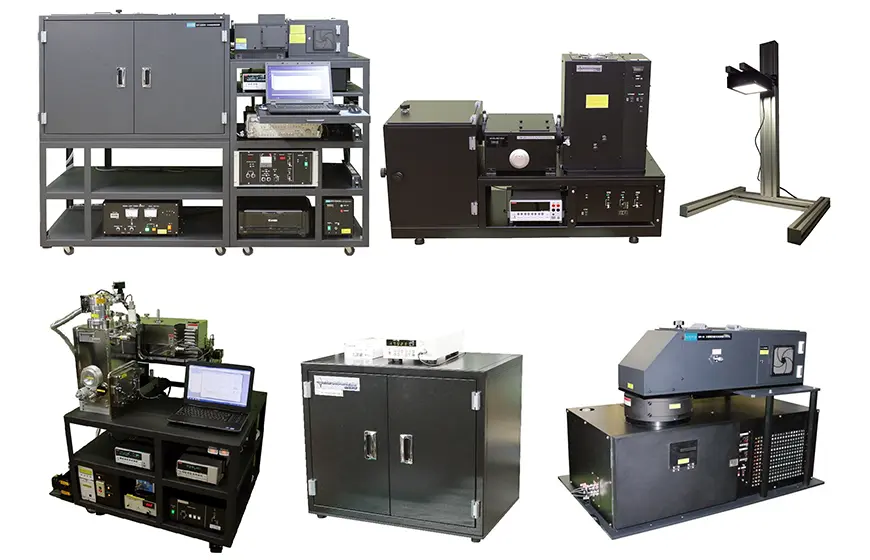
A lineup of equipment ideal for evaluating next-generation solar cells, perovskite solar cells.
Perovskite solar cells are a next-generation solar cell that is low-cost, flexible, lightweight, and can be installed in places where silicon solar cells are difficult to install.
To maximize their performance, we offer a variety of evaluation equipment from Bunkoukeiki Co.,Ltd. that is ideal for evaluating perovskite solar cells.
Perovskite solar cell evaluation equipment
Measurement of the spectral response and quantum efficiency of perovskite solar cells
CEP-2000 Spectral sensitivity
measurement device
(For dye-sensitized / organic thin film / perovskite solar cell evaluation)
This device measures the spectral sensitivity characteristics and
quantum efficiency of various solar cells by irradiating the solar cell
with monochromatic light of constant energy and constant photons
that is not wavelength dependent.
Compared to silicon-type devices, it is ideal for evaluating organic
solar cells (dye-sensitized, organic thin film, and perovskite solar cells)
due to its high constant light energy (maximum 5mW/cm2)
and constant photon irradiation (maximum 1016 photon/cm2).
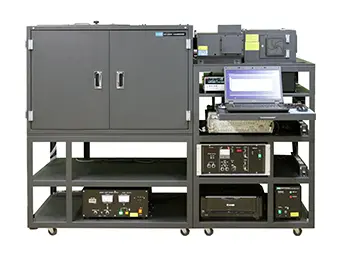
SM-250 Hyper Monolight System
(Desktop Spectral Sensitivity Measurement Device)
A valued silicon photodiode measures the amount of irradiated light
(mW/cm2) at each wavelength, and the current value of the sample
is calculated based on that amount of irradiated light.
The dedicated software (SR_PRO) can automatically display
the spectral sensitivity and quantum efficiency
of various solar cells and photoelectric conversion elements.
Spectrometer's unique xenon lamp optical system and highly efficient
monochromator enable high-intensity monochromatic light irradiation
(5mW/cm2), making it ideal for evaluating organic solar cells
(dye-sensitized, organic thin film, and perovskite solar cells).

I-V measurement (conversion efficiency measurement) using a pseudo-sun light source (solar simulator)
OTENTO-SUNVI Highly approximate
solar simulator
(High-precision spectrum irradiation 20 x 20 mm irradiation)
This is a highly approximate solar simulator with two light sources:
a xenon lamp and a halogen lamp.
It is possible to emit simulated sunlight with reduced emission lines
in the near infrared region.
In accordance with JIC standard C8942, the spectral match,
in-plane uniformity, and irradiation light stability all achieve JIS class MA.

MOS-100 Variable light intensity
solar simulator
This device enables I-V measurement using an automatic light intensity
control type solar simulator.
The solar simulator can automatically adjust the irradiation light intensity
from 0.01 to 200mW/cm2.
Instrument control, data acquisition and data processing are performed
on an attached laptop computer.
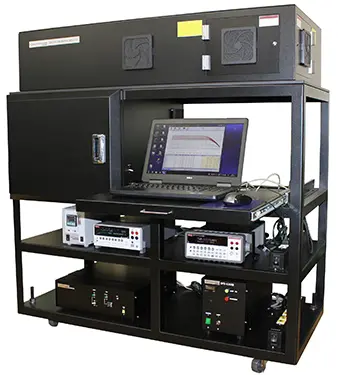
BLD-100 LED light source for indoor light evaluation
This is an LED light source and dimmable power supply for evaluating
the performance of organic solar cells in indoor lighting applications.
The LED light source supports 256-step digital dimming,
and the illuminance can be adjusted between low (200Lx)
and high (1000Lx) without changing the height
of the light-emitting surface.
It is easy to use and has excellent reproducibility.
An optional electromagnetically shielded sample chamber can be added,
allowing irradiation from low to high illuminance (0 to 1000Lx)
without being affected by external light.
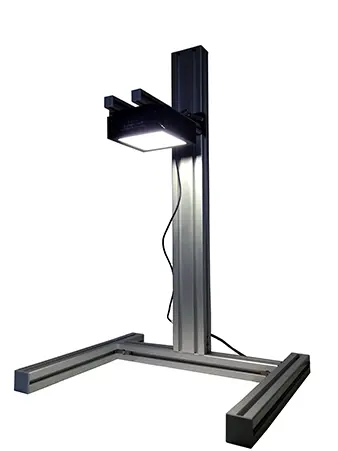
Durability testing of perovskite solar cells
BIR-50 Solar Cell Light Resistance
Test System
(Incubator type 50 x 50 mm irradiation)
By combining a conventional solar simulator 50mm (AAA class)
with a temperature control incubator, it has become possible
to perform light degradation tests and temperature degradation tests
on solar cells more accurately.
In addition, the incubator is equipped with a BNC connector,
allowing I-V measurements to be made.
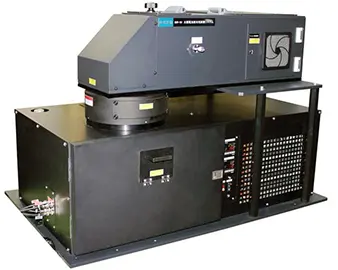
Evaluation of materials for use in perovskite solar cells
BIP-KV201 Ionization Energy
Measurement Device
(9.54 to 4.0 eV, floor-mounted type)
By using Photoelectron Yield Spectroscopy (PYS method),
it is now possible to perform measurements under nitrogen,
air, and vacuum atmospheres.
By using a nitrogen purged spectrometer and optical system,
it is possible to irradiate the sample with vacuum ultraviolet light
up to 9.54 eV.
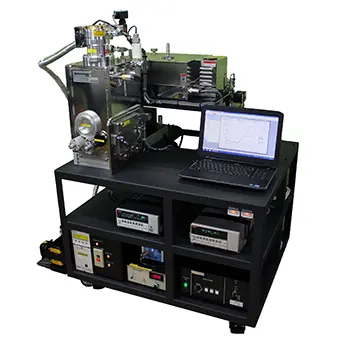
Evaluation of in-plane uniformity of perovskite solar cells
LBC-2 Laser-induced current
measurement device
This device measures the photocurrent distribution of various
solar cells and photoelectric conversion elements
(SiPD, CCD, CMOS).
We use a measurement method called LBIC
(Laser Beam Induced Current).
It comes standard with a 520 nm laser, moves the sample in the XY
direction, and measures the short-circuit current (Isc).
The spatial resolution is approximately 10 μm, and samples up to
50 × 50 mm can be measured.
In particular, solar cells fabricated by spin coating, such as
perovskite solar cells, have the problem of differing uniformity
between the center and edges of the sample surface, and this method
is suitable for evaluating such samples.
It is also suitable for evaluating the uniformity of coating materials
in SiPD, CCD, CMOS, etc.
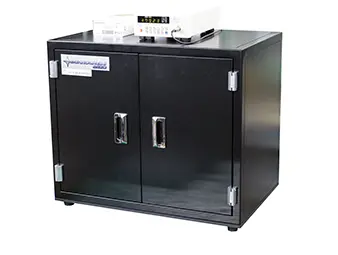
Contact us for more details
 Inquiry form
Inquiry form

